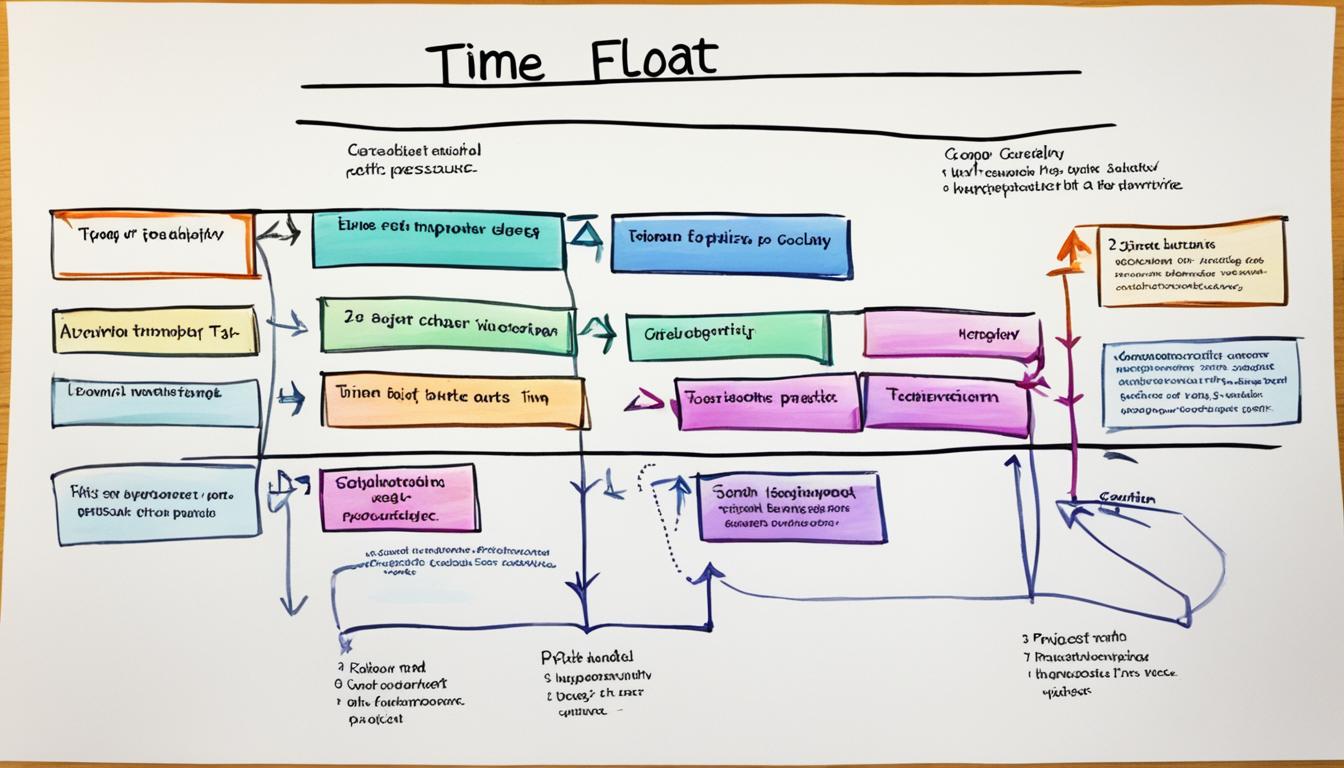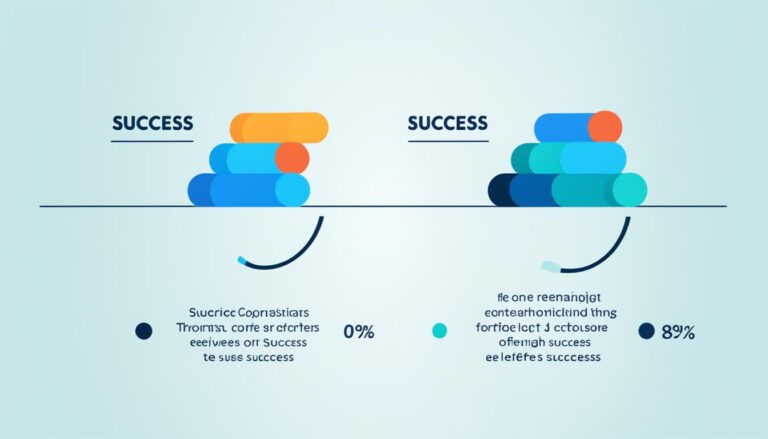Unlock Your Project’s Potential with Float

Have you ever wondered what float really means in project management? How can it impact your project’s success? In the dynamic world of project scheduling, understanding float is essential for effective project planning and resource allocation.
- Float refers to the duration an activity can be postponed without lagging the overall project.
- It helps project managers prioritize tasks and optimize project timelines.
- Float can be divided into two types: total float and free float.
- Total float is the duration an activity can be postponed without pushing the project’s completion date.
- Free float refers to the duration an activity can be prolonged without impacting any succeeding activity.
Takeaways>
The Importance of Total Float in Project Management
In project management, understanding the concept of float is essential for effective project scheduling. Float refers to the amount of time an activity can be delayed without impacting the overall project timeline. It is a crucial factor that allows project managers to identify flexibility and optimize project schedules.
One type of float that holds significant importance is total float. Total float represents the maximum duration an activity can be postponed without affecting the project’s completion date. By analyzing the total float of each task, project managers can identify critical tasks that have limited float and prioritize their resources accordingly.
Calculating total float not only helps in resource allocation but also plays a vital role in calculating the critical path. The critical path is the sequence of tasks that determines the shortest possible project duration. It allows project managers to identify tasks that directly impact the project’s completion date and understand how any delays may affect overall project timelines.
By considering the critical path float, project managers can make informed decisions to prevent potential delays and ensure timely project completion.
//Insert H3 tag if relevant
For project teams, having an accurate understanding of total float is crucial for resource management and risk mitigation. It allows project managers to allocate resources effectively and tackle high-impact tasks that have limited float. By optimizing the use of total float, project teams can enhance efficiency, meet deadlines, and deliver successful projects.
//Insert image tag
As project managers navigate the complexities of project management, float serves as a valuable tool to identify critical tasks, optimize schedules, and manage dependencies. However, it is essential to note that float can also pose challenges if not managed effectively. Risks, unexpected delays, and changes in project requirements can impact the available float and disrupt project schedules.
In the next section, we will dive deeper into the concept of free float and its significance in project management.
Understanding Free Float and its Significance
In project management, free float plays a crucial role in optimizing project timelines and ensuring project success. It refers to the duration an activity can be delayed without impacting the project’s critical path or the schedule of subsequent tasks. By understanding and effectively managing free float, project managers can maintain flexibility within the project’s timeline and efficiently allocate resources.
Free float provides project managers with the opportunity to adjust tasks, without causing delays to other dependent tasks or the project’s overall completion date. By identifying non-critical tasks with available free float, project managers can strategically delay these tasks to alleviate potential delays on critical tasks and optimize resource allocation.
Managing float is essential for project success. Project managers must constantly monitor and analyze the free float of each task to ensure that dependencies are accurately accounted for, and no delays are introduced unnecessarily. By properly managing float, project managers can effectively mitigate risks, optimize project timelines, and improve resource efficiency.
| Float Type | Description |
|---|---|
| Total Float | The duration an activity can be postponed without pushing the project’s completion date. |
| Free Float | The duration an activity can be delayed without impacting any succeeding activity or the project’s critical path. |
Figure 1: Comparison of Total Float and Free Float in Project Management
To illustrate the difference between total float and free float, refer to Figure 1 above. Total float represents the maximum amount of time an activity can be delayed without extending the project’s completion date, while free float indicates the duration an activity can be postponed without affecting any subsequent tasks or the critical path. Understanding these distinctions is crucial for effective project management and ensuring the smooth execution of tasks.

Calculating Float in Project Management
In project management, calculating float is an essential step in optimizing project timelines and ensuring efficient resource allocation. Float refers to the flexibility or slack within a project schedule, and it can be calculated by determining the critical path of the project.
The critical path consists of activities that directly impact the project’s completion time. By identifying these critical activities, project managers can gain insights into potential bottlenecks and prioritize their resources accordingly.
To calculate float, project managers need to determine the early start (ES), early finish (EF), late start (LS), and late finish (LF) times for each activity. ES and EF represent the earliest possible start and finish times, while LS and LF indicate the latest allowable start and finish times without delaying the project’s completion.
Once the values for ES, EF, LS, and LF are obtained, float can be calculated by using the following formula:
Float = LS – ES
or
Float = LF – EF
There are two common techniques used to determine float: critical path analysis and network diagramming.
Critical path analysis involves identifying the critical activities and calculating their float values. This technique helps project managers understand the impact of delaying critical tasks on the project’s overall completion date.
Network diagramming, on the other hand, visually represents the project’s activities and their dependencies through a network diagram. By analyzing the connections between activities, project managers can identify the critical path and calculate float values.
By accurately calculating float, project managers can make informed decisions regarding task prioritization, resource allocation, and project scheduling. It empowers them to effectively manage project timelines, mitigate risks, and ensure successful project delivery.

| Activity | ES (Early Start) | EF (Early Finish) | LS (Late Start) | LF (Late Finish) | Float |
|---|---|---|---|---|---|
| Task A | 1 | 4 | 1 | 4 | 0 |
| Task B | 4 | 7 | 6 | 9 | 2 |
| Task C | 4 | 9 | 4 | 9 | 0 |
| Task D | 7 | 10 | 9 | 12 | 2 |
Conclusion
Float, with its significance in project scheduling, plays a vital role in ensuring project success. By providing flexibility and efficiency, it allows project managers to allocate resources effectively, manage dependencies, and identify potential risks. However, managing float does come with its challenges.
As project managers navigate the complexities of project management, they must continuously monitor and manage float throughout the project lifecycle. This entails staying vigilant to project risks and avoiding common pitfalls. By understanding the concept of float and its calculation, project managers can optimize project timelines and successfully deliver projects on time.
While float empowers project managers to make informed decisions and adjust project schedules when necessary, it is crucial to strike a balance. Overutilizing float may result in complacency and a lack of urgency, potentially leading to delays and cost overruns. Therefore, project managers must approach float management with caution, considering the dynamic nature of project environments.
To ensure timely project completion, project managers must embrace the significance of float in project scheduling. By effectively managing float, they can navigate project complexities, overcome challenges, and ultimately achieve project success.
FAQ
What is float in project management?
Float in project management refers to the duration that an activity can be postponed without causing a delay in the overall project. It is a valuable concept that helps project managers effectively manage and prioritize tasks.
What are the types of float in project management?
There are two types of float in project management: total float and free float. Total float is the duration an activity can be postponed without pushing the project’s completion date, while free float refers to the duration an activity can be prolonged without impacting any succeeding activity.
What is the importance of total float in project management?
Total float is a crucial concept in project management as it allows project managers to identify flexibility and optimize project timelines. By analyzing the total float of each task, project managers can prioritize their resources and focus on critical tasks that have limited float.
What is free float and why is it significant?
Free float refers to the duration an activity can be delayed without impacting the project’s critical path or the schedule of subsequent tasks. It provides flexibility within the project’s timeline and allows project managers to adjust tasks without causing delays to other dependent tasks. Understanding free float is crucial in optimizing resource allocation and managing potential delays.
How can float be calculated in project management?
Float can be calculated by determining the critical path of the project, which consists of activities directly impacting project completion time. Once the critical path is determined, float can be calculated using specific formulas. Project managers can use critical path analysis or network diagramming techniques to determine float values for each task.






